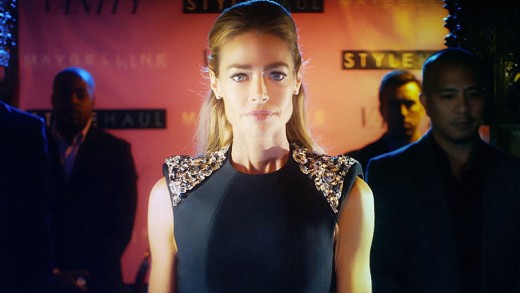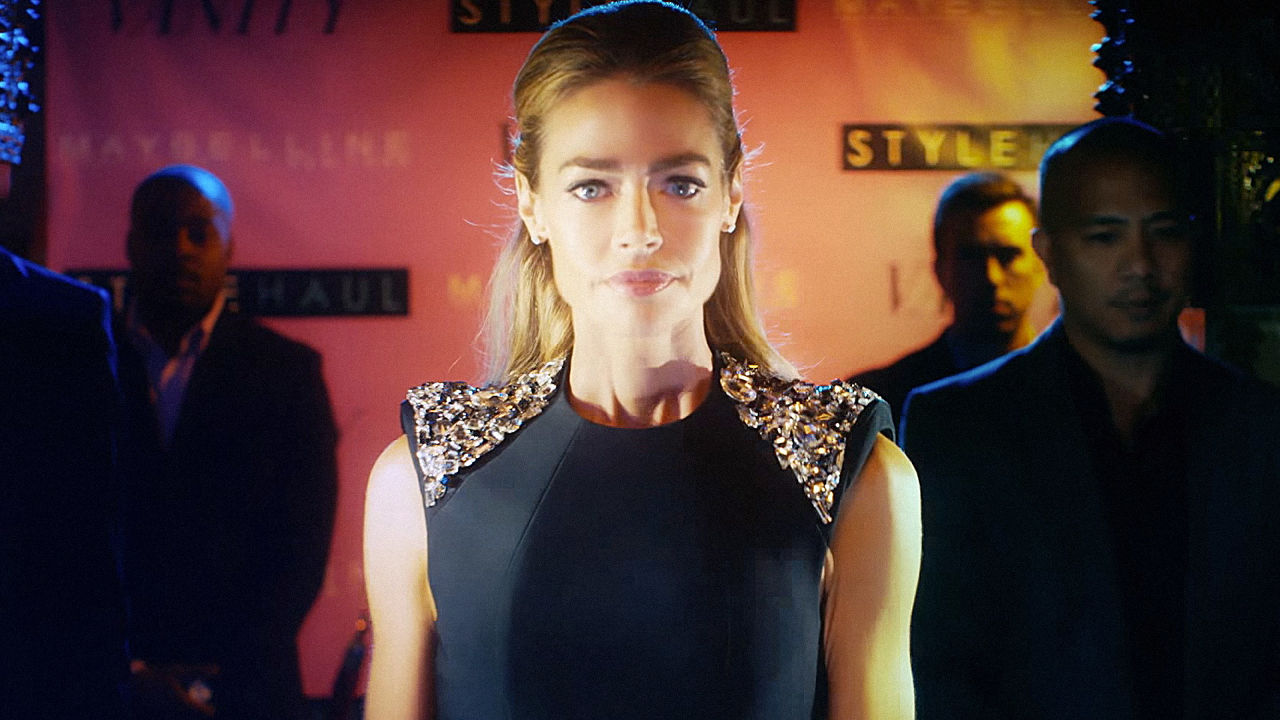master The art Of Social Storytelling With These 3 lessons From StyleHaul’s CEO
StyleHaul CEO Stephanie Horbaczewski has made social storytelling a pillar of her trade. this is how you can, too.
November 25, 2015
when we talked to her nearly three years ago, StyleHaul CEO Stephanie Horbaczewski was once banking on a major investment: her personal shoppable video participant.
StyleHaul, the digital type and style platform, acquired its begin in 2011 on YouTube with fashion how-tos and beauty overview videos starring and produced via a rising community of millennial influencers. through early 2013, StyleHaul used to be the No. 1 model and grace channel on Google’s video large, with a network of nearly 2,000 video bloggers across forty one international locations.
“That Kool-help I drank with everybody else,” Horbaczewski tells fast firm, taking a look again at her video platform plan. “With this many video players out there, it can be simply no longer the course i’m concerned with.”

quickly after her look in our June 2013 issue, Horbaczewski saw the writing on the wall: The network didn’t have a catalog of original video massive enough to warrant its personal player. An explosive trend towards social storytelling on platforms like Snapchat compelled her to halt the platform building in its tracks and rethink her plans. Horbaczewski made up our minds the community would proceed publishing its multichannel content on native structures like Instagram and YouTube.
In late 2014, European entertainment firm RTL group sold a controlling stake in StyleHaul for north of $100 million and has since invested $20 million in bettering the platform and its instruments for monitoring social and video affect.
Now StyleHaul has 7,000 influencers creating videos in 86 international locations (half of them outside the U.S.), a personnel of greater than a hundred, and greater than 500 million social lovers. This summer, the corporate launched its first foray into unique scripted content material on YouTube with vainness—a drama starring Denise Richards and adaptation Karrueche Tran, backed via Maybelline. An upcoming scripted collection will also characteristic one of StyleHaul’s personal influencers as a producer.
here’s how Horbaczewski mastered social storytelling and made it a tentpole of her industry:
go back To community
step one, Horbaczewski says, is to forestall pondering of social publishing as a one-sided motion.
“i’m so ill of listening to the phrase ‘follower’ or ‘fan.’ you have to return to the word ‘community.’ i feel that is if truth be told changing the entire trajectory of StyleHaul. The comic story around the administrative center is, ‘each advertiser wants to copy the Ice Bucket challenge.’ And that used to be fully according to a neighborhood job,” Horbaczewski says. “How can we take the stone, drop it within the water, and be sure that each outstanding circle that comes out from it—that we continue to insert in whatever our function is?”
to keep interactions genuine, Horbaczewski says publishers need to call to mind the network as an entire, including all creators and users. For StyleHaul, whose bread and butter is pairing its influencers with advertisers for branded movies like magnificence samples, she says it’s now not simply the “top” influencers that operate smartly in converting views into transactions. StyleHaul data has shown that even the smaller-time influencers have an effect, so the platform makes a speciality of helping its community as an entire rather than striking its efforts in the back of a number of influencers.
“think about scrolling thru your feed. I knew I appreciated a publish this morning, however i do not remember what it was once. but if I saw something 15 times—the way in which you noticed the Ice Bucket challenge 15 instances every day—it has far more impact,” Horbaczewski says. “How do we marry that idea of influence, however with scale and individualizing that content material? It means it’s important to spark off extra customers.”
don’t Lose The Human touch
StyleHaul used to work to gather influencers—a an important a part of the social video version. but now the network has reached any such huge scale that it can be now not about one influencer. “it is about the usage of 50 or a hundred in every campaign,” Horbaczewski says of branded content material featuring StyleHaul influencers.
StyleHaul uses a mixture of proprietary data gathering and information firms like Tubular to track user habits.
but Horbaczewski remembers a time when the StyleHaul algorithm for matching influencers with brand partners used to be extremely personal, with the platform doing many of the lifting within the selection process. Then the pendulum swung in the opposite direction—the corporate used its data cocktail for nearly every single decision it made. but now (even given StyleHaul’s enormous scale) the adaptation is back to being a mix of excessive touch and knowledge-based choices.
the method contains three steps. First, Horbaczewski’s crew consults with the brand on what they’re searching for. Then StyleHaul makes use of its algorithm to weed out folks who may not be a fit (if a brand sells handiest at Ulta, for example, StyleHaul removes all influencers who deal with Sephora). Then the StyleHaul group goes in the course of the candidates with a “excessive-contact” lens, making an allowance for small print like whether or not the influencer goes thru one thing personally, or whether or not she’s looking to transfer faraway from type and into cosmetics.
“It was so high contact to start with, and then we tried to shift into the whole lot being knowledge. again the life cycle returns to it being a mixture,” Horbaczewski says.

Meet Your customers where they’re
“looking to make any individual adapt to something they do not have a necessity for is an uphill fight,” says Horbaczewski of the dormant video player StyleHaul inbuilt 2013. She also killed a web page mission for the platform that would have put StyleHaul in the editorial industry with publishing on its website. Horbaczewski realized her brand used to be the conversation and content material around products as a substitute of reportage about them, so her strongest wager used to be to post on current social media structures.
Horbaczewski has to meet her users where they’re. As such, StyleHaul by no means publishes identical content on two structures.
“Now we have a look at video and we expect for a core video that is 10 minutes on YouTube—there is two minutes which can be proper for Amazon, there is most definitely two or three minutes that are right for facebook, 15 seconds which might be proper for Instagram, and 7 seconds that are proper for Twitter. which you can have a look at it, and now this asset was six completely different tales,” Horbaczewski says. “One component to it’s, How do you in finding the suitable story the use of the content material you might have for each and every platform? And the 2d is shooting the introduction that they may be doing. How do we spark off folks that want to talk concerning the specific manufacturers?”
whereas StyleHaul couldn’t make shoppable video work at the time, Horbaczewski is aware of her network does play a massive part in style and style commerce through the process of authentic social discovery.
“we now have got to begin thinking more about how we use video elements on social systems and how we use social platforms, now not about learn how to make folks buy things. We do make people purchase issues, nevertheless it’s thru storytelling,” she says. “it’s much less about the actual transaction and more in regards to the activity.”
Up subsequent: Horbaczewski wants to make the StyleHaul device much less directed at traditional networks and advertisers, and extra B2C to lend a hand its producers track their own performances and get paid to make the social content they’d already create.
“What i need is a few type of device the place they can authenticate and apply up on opportunities. as a result of they may be nonetheless going to go to other structures, too. we now have viewed that with aggregators of social platforms—it’s similar to shopping in a video. it is just no longer a behavior people want to do. i admire to go to Instagram to do my Instagram factor. Then i’m going to Twitter to do my Twitter factor. i don’t want to see them all in one web page. it is a experience for me,” Horbaczewski says. “Our device is really more about how we connect the advertisers to all of these influencers, as section of what is already an extraordinarily a hit partnership we have already got with these folks, and the consumer experience we have already got. nevertheless it’s extending into the additional group—into the five hundred million enthusiasts.”
(19)














